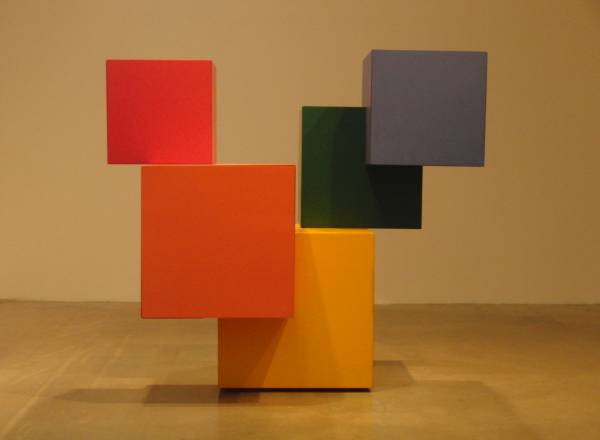Meulensteen
511 West 22nd St. between Tenth & Eleventh Aves.
Tuesday – Friday through January 8, free
212-691-4342
www.meulensteen.com
scott burton slideshow
Chances are that you not only have seen work by Scott Burton without realizing it, but you might have actually sat in it as well. Born in Alabarma in 1938, Burton, who died of AIDS in New York City in 1989, is most well known for his public art projects, which primarily consist of functional urban plazas with chairs, benches, and even trash receptacles. His installations can be found at the the Sheepshead Bay Fishing Piers, the World Financial Center Plaza in Battery Park City, and inside the old AXA Equitable Center (“Atrium Furnishment”) and outside the old PaineWebber (now UBS) Building across the street. Inspired by Romanian sculptor Constantin Brancusi and Dutch furniture designer Gerrit Rietveld, Burton studied with Leon Berkowitz and at Hans Hofmann’s painting school, all of which play a role in his minimalist creations, several of which are currently on view at the Meulensteen gallery in Chelsea (formerly Max Protetch). Curated by Nina Felshin, Burton’s project coordinator and archivist from 1985 to 1989, the exhibit’s centerpiece is “Three-Quarter Cube Benches,” four red-granite chairs arranged in a circle, looking as if they are in the midst of their own conversation, no people needed. The white, regal “Marble Armchair” is like a throne worthy of a statue of Abraham Lincoln, while the rolled-steel “Two Curve Chair” appears much more fragile. (Don’t try sitting on any of the objects, by the way.) “Five-Part Storage Cubes” recalls Donald Judd, who also made functional art-furniture; adding a burst of color to the front showroom, each of the interconnected red, yellow, blue, green and orange pieces opens up, but don’t do it yourself, as it’s strictly hands off, which is one of the reasons why the exhibit is so intriguing. Visitors might want to take a seat in the lacquered pine “Lawn Chair (Adirondack Chair),” open a box, maybe even have tea on Burton’s red-granite “Cafe Table” but, of course, can’t, blurring the line between form and function, art and furniture.
